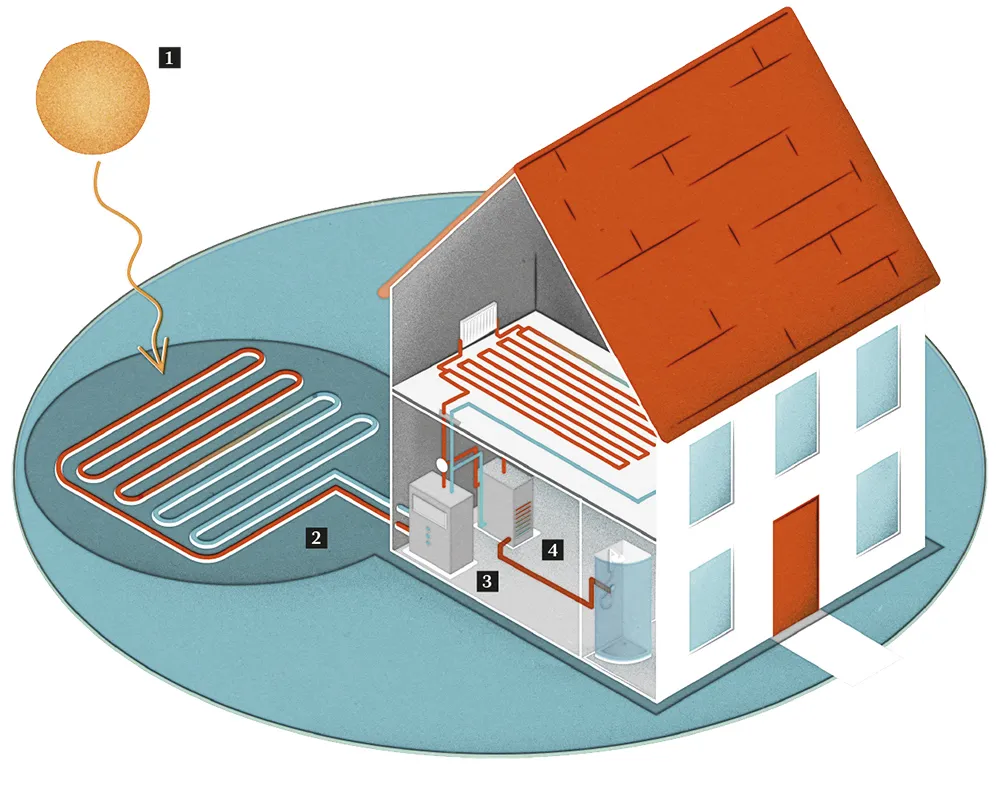Ground source heat pumps harness the heat energy stored naturally in the ground and concentrate it to provide energy-efficient, year-round heating and hot water for your home.

1. Subterranean heat
Sunlight warms the ground and this heat percolates down through the subsoil. The process is slow enough that the daily and seasonal weather fluctuations are evened out. Even in winter, the temperature is a constant 10°C two metres below the surface.
2. Absorb the heat
Water and antifreeze are pumped through underground pipes in a closed loop to the heat exchanger located in the house. The water is warmed up along the way by the enormous reservoir of stored heat in the ground.
3. Transfer and circulate the heat
The heat exchanger uses the warm water to evaporate a more volatile fluid – usually the same fluid that’s used as fridge coolant. The evaporated vapour is then compressed using an electric pump to raise its temperature high enough to heat the water in the property’s inner heating loop.
4. Reduce energy use and stay warm
The pumping and compressing uses less than a third as much electricity as heating the water directly because most of the energy comes from the ground heat. The inner loop runs at a lower temperature than gas central heating though, so it’s best used with underfloor heating or larger, low-temperature radiators.
Read more:
- How does solar energy actually work?
- What is the greenest energy source?
- Why hasn’t tidal power taken off yet?
- What is the CO2 per mile for electric cars charged from the mains?
To submit your questions email us at questions@sciencefocus.com (don't forget to include your name and location)
- This article first appeared inissue 372 of BBC Science Focus Magazine–find out how to subscribe here
